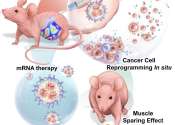The priorities for food-security research under extreme events
Fixing hunger is as challenging as ever. Many food producers, including farmers, hunters and fishers are food-insecure; meaning they're not always sure where their next meal will come from. More than 50% of the roughly 600 ...









